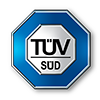Technical terms of quality management: K
K 7
Kaizen
Striving for continual improvement. This is a Japanese term that means “good change“. Kaizen is a way of thinking or a mentality that describes both the path and the goal of continual, continuously progressing improvement.
Kanban
Material flow control system based on cards as information carriers. Kanban is a Japanese term and means card or sign. It is an instrument that uses cards to help control the material and information flows in the production area. This control instrument is used to implement production scheduling oriented on a minimum inventory at all production stages. Kanban is opted for when a production system is to be achieved in accordance with the just-in-time principle.
Kano model
Customer satisfaction model describing the impact of customer requirements on customer satisfaction, named after Japanese developer Noriaki Kano.
KBA
Kraftfahrt-Bundesamt, Flensburg. www.kba.de
Key account
A primary customer.
Key Account Management
Arose as a sub-area of customer marketing in the 1960s and identifies the systematic cultivation of the relationships to important customers (key accounts). Because it is often the case that a few customers make up the largest share of the revenue, it is worthwhile for companies to give special attention to their key accounts. Usually a fixed contact person is established (key account manager) who is particularly responsible for ensuring that the important customer itself is successful in its market. Key account management does not mean the sale of products to large customers. Instead, the following is called for: Supplying solutions; helping with process optimization; contributing in the development of new products and services; and contributing to the joint development of new business fields or in strategy and future planning. This is because a customer‘s importance is not necessarily in the revenue; it can also be in access to new markets (regions, groups of customers) mediated by a customer or in the development of new technologies and products enabled or facilitated by this customer. Key Account Management is particularly encountered in the consumer goods and investment goods industry.
Key process
Process that is strategically important for the company and that makes a crucial contribution to the business success. The following differentiation factors can be used to identify key processes: Value added, customer value, and own know-how. Key processes can be core, management or support processes. Example: Two training providers offer the same training in the same quality. One of them has an excellent marketing strategy that ensures it will have economic success. The support process “Marketing“ is consequentlyb central to the company‘s success and is a key process.
Knowledge management
The manner in which an organization pursues the targeted handling of theoretical and practical knowledge. As a rule, knowledge management checks which knowledge is needed in which scope for which function and then provides this knowledge in a suitable form. Knowledge can be broken down into explicit knowledge (can be expressed and passed on formally in language, words, images, etc.) and tacit knowledge (arises primarily in personal experience and is hard to put into words). Tasks comprise the definition of knowledge objectives, the organization of knowledge acquisition, promotion of the exchange of knowledge, seeing to knowledge preservation, and controlling the use of knowledge. In the newer management theory, knowledge management is increasingly seen as the promotion of the organization‘s ability to learn and in contrast, strictly hierarchical ordering and transmission of knowledge are criticized. The objective is an organization that is intelligent, that generates knowledge, and that is able to make decisions. Knowledge management is consequently less about pre-structuring knowledge and more about creating an organizational culture that encourages learning in the form of creating and implementing knowledge.
KonTraG
Gesetz zur Kontrolle und Transparenz im Unternehmensbereich [German Corporate Sector Supervision and Transparency Act]. KonTraG went into effect on May 1, 1998 and has the objective of improving corporate governance (methods and instruments for managing and monitoring organizations) in German companies.
KPI
Key Performance Index or also Key Performance Indicator. Performance figure for determining and measuring the extent to which important objectives or critical success factors have been met.
KPQM
Knowledge Process Quality Model: Model for assessing the maturity level of knowledge processes. It describes the development of the process maturity in six levels (level 0 – 5 from initial to continual improvement). Each is examined on the basis of four development paths (process organization; employee deployment and knowledge networks; acceptance and motivation; computer-based support). The assessment results can be used to derive prioritized actions for knowledge management.
KTQ
Kooperation für Transparenz und Qualität im Gesundheitswesen [cooperation for transparency and quality in the health sector] (quality standard as an industry solution for hospitals, rehabilitation centers, nursing facilities, alternative dwelling forms and doctor‘s practices). The KTQ group was established as a combination of associations at the federal level in Germany in the mid-1990s with the objective of continual quality improvement in hospitals. The KTQ model is a practice-oriented method to evaluate quality and safety. It is furthermore an objective to increase transparency in the performance quality and medical performance and also to implement new quality elements. Today KTQ GmbH is an important supplier of systems to demonstrate quality management for facilities in the health sector in Germany. KTQ is also a registered trademark. Certification in accordance with the KTQ procedure is also possible. www.ktq.de
